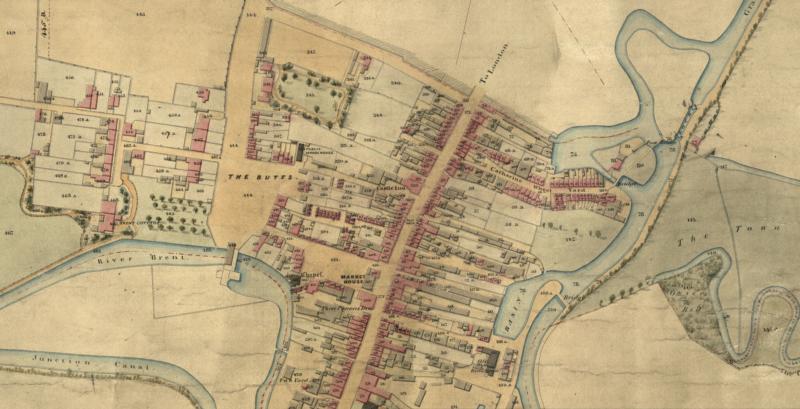TheGenealogist completes linking English Tithe Maps to Map Explorer™
All English Tithe Maps are now georeferenced to modern and historic maps
Family historians can now search the complete National Tithe Record Collection for England and view their ancestors’ land and homes plotted through the ages on Victorian Tithe maps, as well as on today's Modern Street and Satellite maps.
TheGenealogist’s powerful Map Explorer™, which has seen a number of records added in recent months, will now also benefit from the inclusion of Tithe Maps and Records for five extra counties of England. With Gloucestershire, Hampshire, Herefordshire, Nottinghamshire and Sussex joining those that had previously been released means that TheGenealogist now has all of the English counties’ Tithe Records and Maps available to its Diamond subscribers on Map Explorer™.
Map Explorer™ georeferences a Tithe Plot to various historical and modern maps
Tithe records cover the majority of the country and were created by the 1836 Tithe Commutation Act which required tithes in kind to be converted to monetary payments called tithe rentcharge. The Tithe Survey was established to find out which areas were subject to tithes, who owned them, who occupied the various parcels of land, the usage of the land, how much was payable and to whom and so generated these maps and apportionment books.
With Map Explorer™ researchers have the ability to pinpoint a record to the exact same coordinates on various historical and modern maps. Family and house historians are therefore able to see where an ancestor’s land plot was throughout the eras, even when the landscape has completely changed over the years.
- Total number of maps in this release is 1,310
- Total pins on georeferenced plots added in this release is 673,352
- Map Explorer™ now has a total number of 11,804 georeferenced Tithe maps to view
- 5,202,983 georeferenced parcels of tithable land are now on Map Explorer™, indicated by map pins
Tithes usefully record all levels of society from large estate owners to occupiers of small plots, such as a homestead or similar, as we discover in this weeks’ case study.
See TheGenealogist’s article: Plotting A Victorian Farmer’s Home Over Time
Find out more at TheGenealogist.co.uk/maps/
About TheGenealogist
TheGenealogist is an award-winning online family history website, who put a wealth of information at the fingertips of family historians. Their approach is to bring hard to use physical records to life online with easy to use interfaces such as their Tithe and newly released Lloyd George Domesday collections.
TheGenealogist’s innovative SmartSearch technology links records together to help you find your ancestors more easily. TheGenealogist is one of the leading providers of online family history records. Along with the standard Birth, Marriage, Death and Census records, they also have significant collections of Parish and Nonconformist records, PCC Will Records, Irish Records, Military records, Occupations, Newspaper record collections amongst many others.
TheGenealogist uses the latest technology to help you bring your family history to life. Use TheGenealogist to find your ancestors today!

